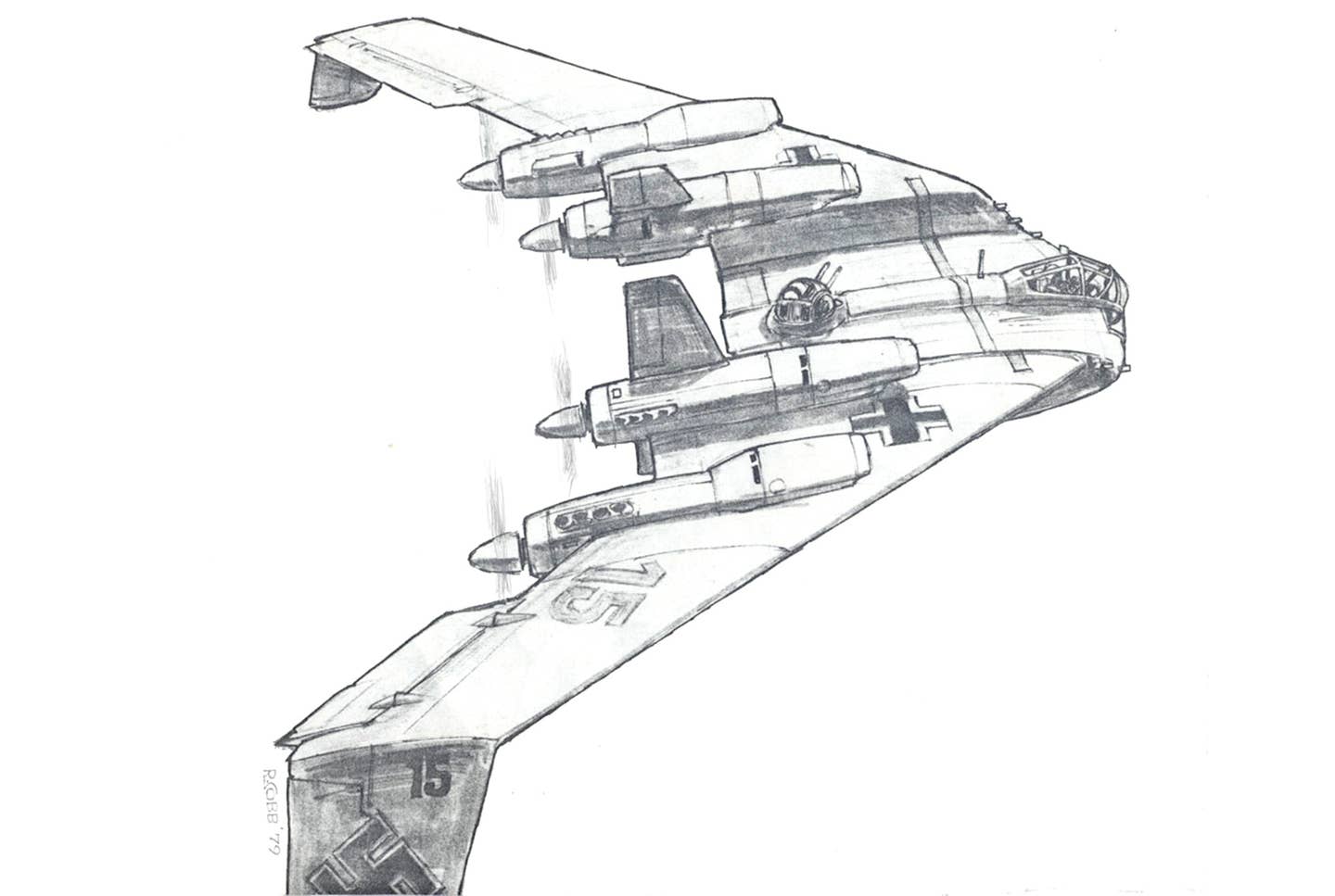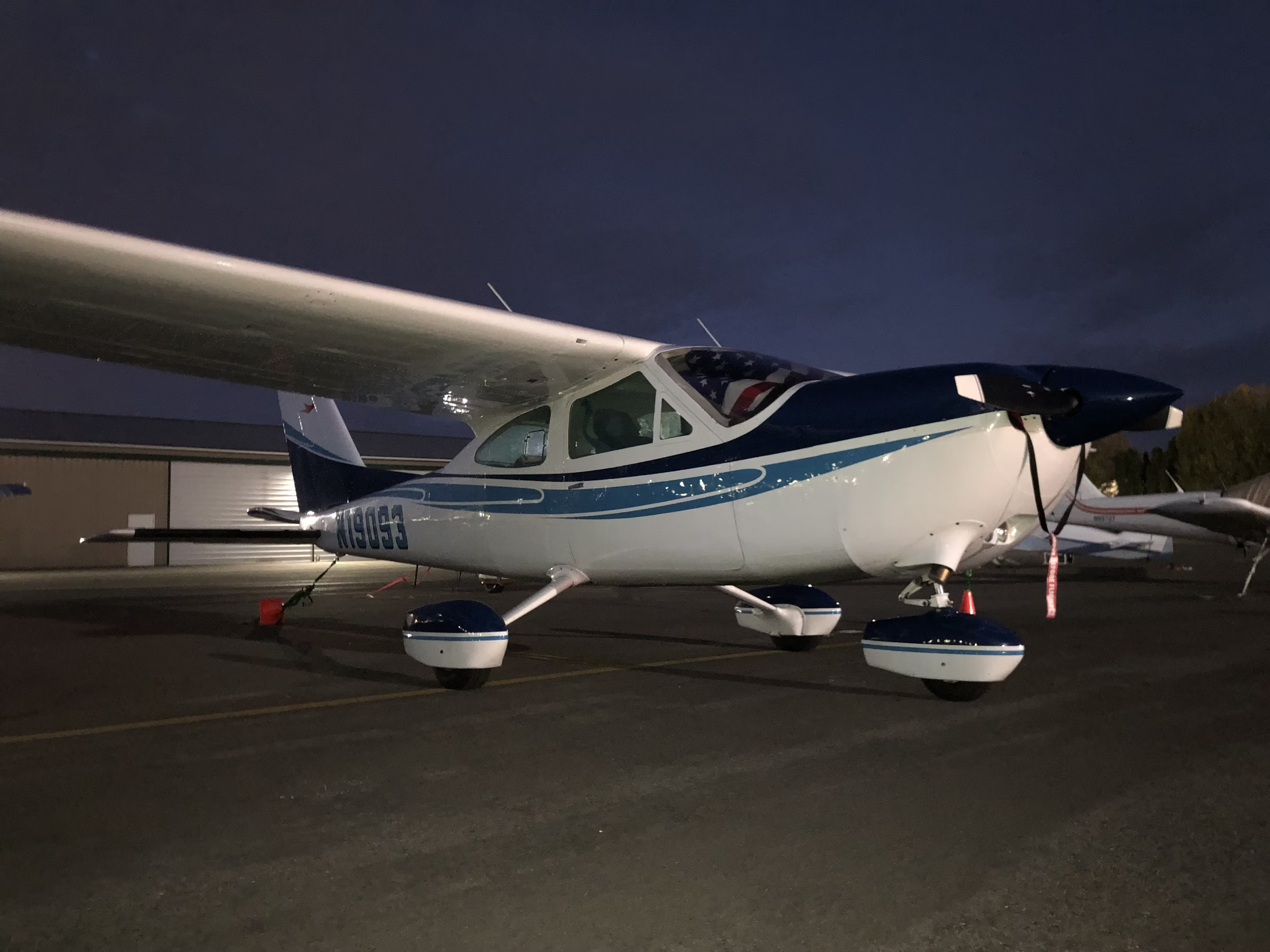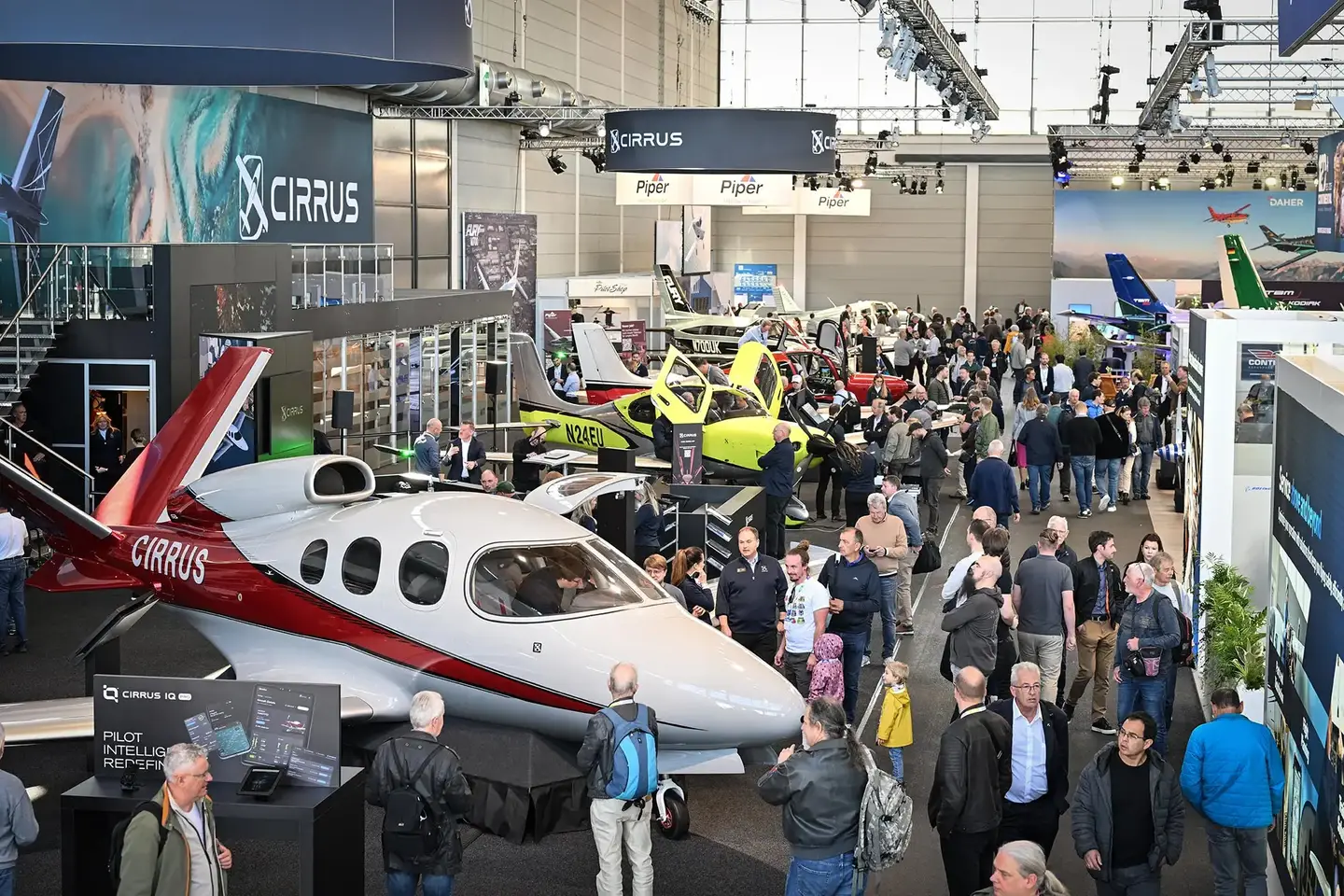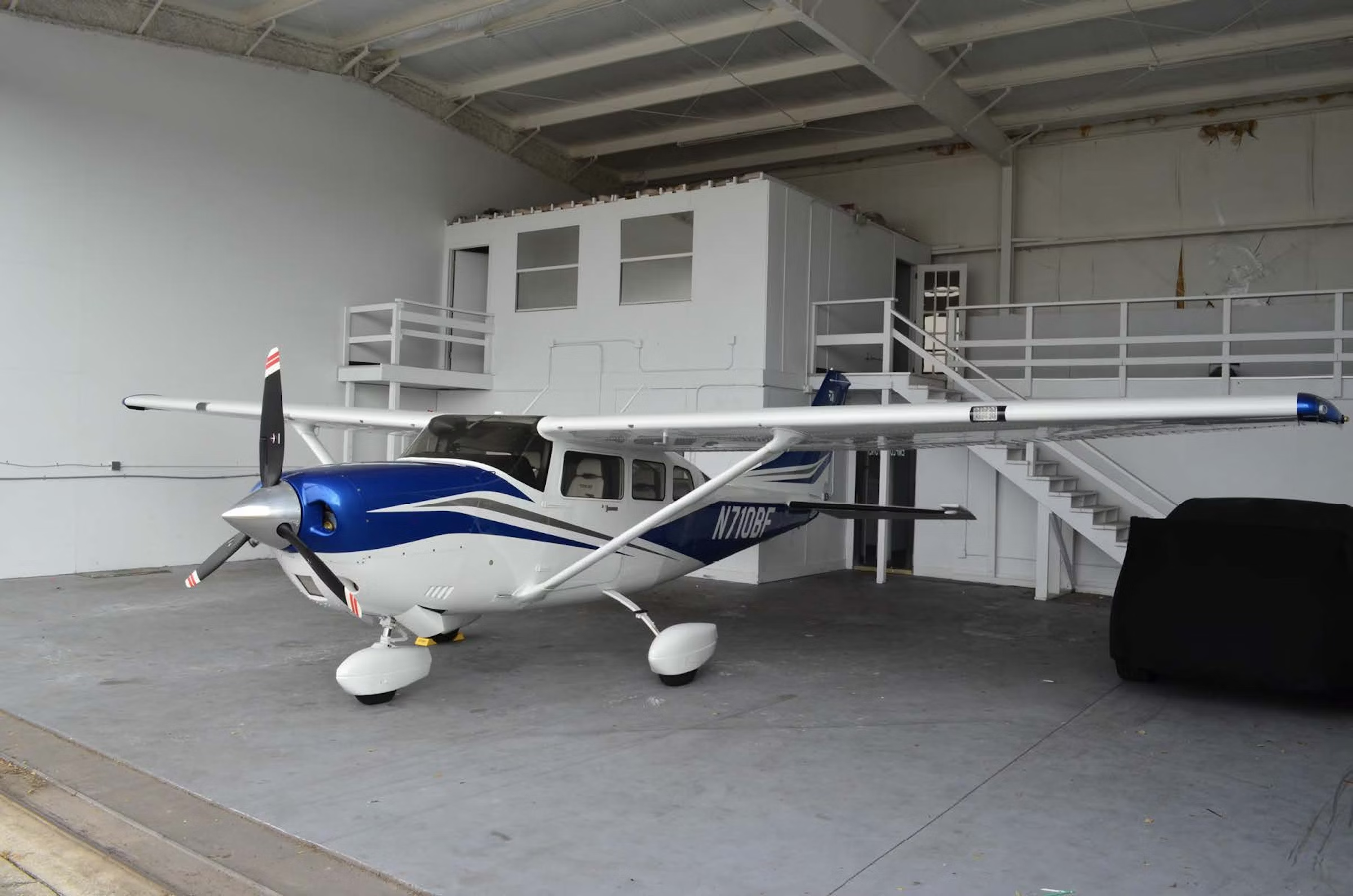Technicalities: The Story Behind the German Airplane in Raiders of the Lost Ark

The final concept of the plane featured in Raiders of the Lost Ark had four engines. By the time the airplane hit the screen, it was down to just two. Illustration by Ron Cobb
Early this year my son, who was screening a series of classic films for friends, put on the 1981 Spielberg pulse-pounder Raiders of the Lost Ark, which came out in the year he was born and, therefore, stood to him, in terms of the history of film and the decline of taste, as Casablanca does to me.
My son, showing that when it comes to sesquipedalianism, the fruit does not fall far from the tree, texted me: "Is the airplane whose prop eviscerates a large bald man in Raiders of the Lost Ark a real plane or is it a contrivance?"
No, I replied, it was not real. But it was interesting nonetheless.
The airplane was dreamed up by production artist Ron Cobb. Designing a historically plausible and dramatic-looking Nazi airplane was not difficult, since the German aircraft industry was by far the most innovative of its time and came up with many stranger-than-fiction designs. The Reynolds airplane, a flying wing, seems to have been inspired both by an early Northrop prototype, the N-1M, and by an abortive German project of a twin-engine fighter, tagged Li P.04-106, conceived by the inventive Alexander Lippisch.
Both were twin-engine pushers. The downward-turned wingtips of the Cobb creation probably came from the original configuration of the Northrop airplane, the final version of which, with unbent wings and a brilliant yellow paint job, may today be found in the Udvar- Hazy facility of the National Air and Space Museum. The strange dip in the center section, on the other hand, must have answered to some requirement that actors be able to jump onto, or from, the wing, since it makes neither historical nor aerodynamic sense.
For the eponymous Ark of the Covenant, production designers had only to consult the Old Testament, which provides detailed instructions for its construction. I must have been getting popcorn when the reason for the Nazis’ interest in acquiring the Ark, or the Allies’ in retaining it, was explained. Generally speaking, the Germans displayed little interest in Hebrew memorabilia, and the Allies displayed little interest, until it was far too late, in rescuing European Jews. Screenwriters, however, are paid not to reproduce reality but to create alternative versions of it.
Apart from the strange center section and the unlikely placement of the vertical fins atop the engine nacelles, the Reynolds design, or contrivance, looked more or less airworthy. Needless to say, it never flew, nor was it intended to. It suffered, instead, the unseemly fate of most large movie props. Exposed to the elements on the abandoned Tunisian set and pillaged by souvenir hunters, after 10 years it was finally demolished by a bulldozer.
But that was not the end of its story.
About a decade after the release of the film, the German airplane and its associated evisceration became part of a show called The Indiana Jones Epic Stunt Spectacular at Walt Disney World Resort in Florida. Now, the original airplane was or was soon to become dust in Tunisia, and, at any rate, it was probably too big to fit in the new show’s stage. A new, more conveniently proportioned German airplane was required, and, incidentally, it needed to have tractor rather than pusher propellers and a much larger cabin so that human actors could still be accommodated in the much smaller craft and could conduct their fight — which ended with the disappearance of the German in a puff of red mist — in the space between the airplane and the audience.
A revised version was duly produced with a bulging greenhouse cabin reminiscent of the famously asymmetrical Blohm & Voss BV 141 and with tractor nacelles elongated into booms supporting two vertical fins. The shape of the original wing, which with its sagging center section, uplifted middle and downturned tips resembled an indignant seagull, remained. Thanks to the general insensitivity of the nonspecialist public to the appearance of technical things, many visitors to the Florida show probably left unaware that they had seen not the original, grand and now pulverized German airplane, but a shrunken impostor.
To the occasional bemused specialist, however, the question occurred: Could they have flown, and if so, which would have been the better design?
The two wings were broadly similar. Cribbed from real flying-wing designs, they were tapered and swept, as is usually done in the absence of an empennage, to allow not only roll but also pitch attitude to be controlled by what would be the ailerons of a conventional airplane.
The placement of the vertical fins atop the engine nacelles of the original version was structurally tricky but not impossible. However, it was aerodynamically senseless because, to the extent that the vertical surfaces were to have any stabilizing effect, they ought to have been as far aft as possible, and, therefore, to have been placed near the wingtips.
A more serious difficulty — and this is a challenge for any tailless design — was the position, rather far aft, of the engines themselves. Tailless airplanes have narrow CG ranges and require careful balance; placing the engines too far from the center of gravity makes balance impossible. The Northrop airplane solved the problem by burying its engines within the wings and driving the propellers through extension shafts.
The Mark II German airplane was little better in this regard. Its engines were too far forward. The aft extensions of the nacelles put the vertical fins in a much more favorable location but could not have been heavy enough to balance the engines unless some massive fixed equipment had been installed in them — perhaps two remotely aimed gun turrets.
By the same token that a wing-only airplane — in German, a nurflügel — has a narrow CG range, it has relatively weak longitudinal stability. Tractor propellers are destabilizing; when the nose comes up, a tilted propeller, by bending a stream of air downward, tends to pull it up farther. Tractor props are, therefore, not a good choice for a flying wing, especially one with powerful engines like the 1,200 hp Daimler- Benz V-12 that would have been the Luftwaffe's likely choice, had this airplane really existed.
Were these German “airplanes” really airplanes or just contrivances? All things considered, it’s probably best that no one tried to take to the air in either of them. But, to be fair, they served their purposes, and, after all, it’s not so bad to be a mere contrivance. Airplanes are contrivances too.

Sign-up for newsletters & special offers!
Get the latest FLYING stories & special offers delivered directly to your inbox






